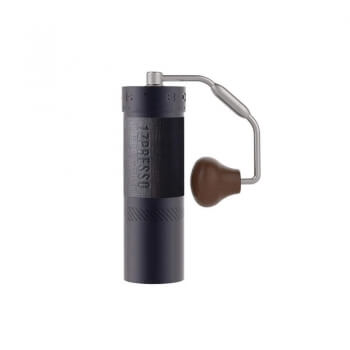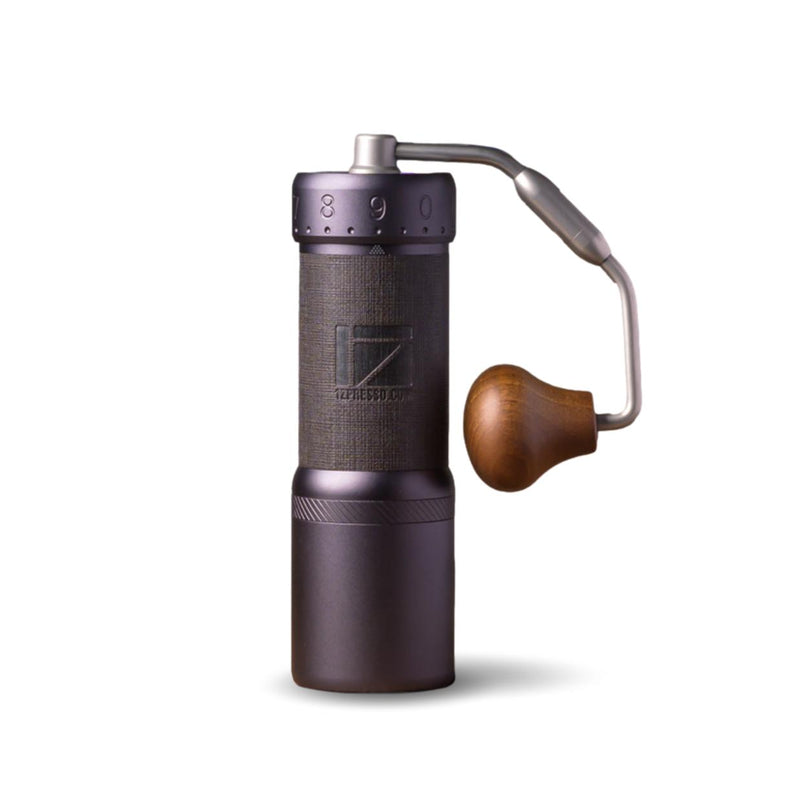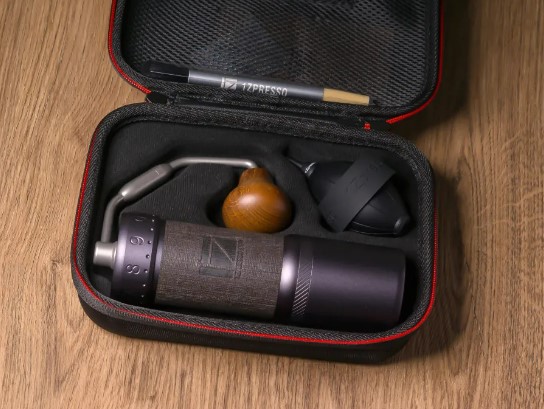Elevate Your Brew Video Game: 1Zpresso J-Max Coffee Mill for Coffee Aficionados
Elevate Your Brew Video Game: 1Zpresso J-Max Coffee Mill for Coffee Aficionados
Blog Article
Master the Art of Grinding Coffee Beans: A Guide to Coffee Grinders
For coffee enthusiasts, the process of grinding coffee beans is more than simply a regular task; it is an art form that can substantially affect the flavor and quality of the final brew. Understanding the subtleties of various grinder types, selecting the suitable grind size, and utilizing the right methods are vital actions in the direction of attaining that perfect cup of coffee.
Sorts Of Coffee Grinders
There are three primary sorts of coffee grinders frequently made use of by coffee fanatics: blade mills, burr mills, and hands-on grinders. Blade grinders are the most fundamental kind, utilizing a basic blade to slice the coffee beans. While they are economical and easy to utilize, they typically cause irregular coffee premises as a result of irregular grinding. Burr grinders, on the other hand, offer even more accuracy by squashing the beans in between a moving grinding wheel and a non-moving surface. This results in an uniform work dimension, which is critical for a regular coffee taste. Burr mills can be found in both flat and conical forms, each offering a little different grinding qualities.
Hand-operated mills, as the name recommends, need hand-operated effort to grind the coffee beans. Each type of coffee grinder has its benefits and ideal use instances, catering to the diverse choices of coffee fanatics.

Choosing the Right Work Dimension
With an understanding of the various sorts of coffee mills, the following crucial step in accomplishing the excellent mug of coffee is choosing the ideal work dimension. The work dimension plays a significant role in identifying the taste account of your coffee (1Zpresso J-Max). Different brewing methods require particular grind sizes to maximize the removal of tastes from the coffee premises
For a crude work, perfect for French press and cool mixture approaches, the coffee beans need to look like breadcrumbs, supplying a durable and strong flavor. Medium-coarse grinds, appropriate for Chemex or Clever Dripper, have a texture similar to coarse sand, offering a balanced taste.
Tool grinds, often used in drip coffee machine, have an uniformity resembling normal sand, causing a well-shaped taste. Great grinds, finest for espresso machines, are comparable to common salt, generating a rich and intense taste. Lastly, extra-fine grinds, utilized in Turkish coffee, are as great as powdered sugar and create a strong and potent mixture.
Grinding Methods for Optimal Flavor
To remove the maximum potential of flavor from your coffee beans, mastering proper grinding techniques is important. Uniformity is vital when it pertains to grinding coffee beans for optimum taste. Making certain that the coffee beans are ground uniformly is important to achieve a balanced removal during the brewing process. Among the essential strategies for improving taste is to adjust the work size based upon the brewing approach being used. A great grind is excellent for coffee makers, while a coarse grind is extra suitable for French press developing. Additionally, the grinding time plays a considerable duty in flavor extraction. Over-grinding can result in a bitter preference, while under-grinding might result in a sour taste. It is recommended to explore various work sizes and developing times to discover the excellent balance that fits your preference choices. 1Zpresso J-Max By taking notice of these grinding methods, you can boost the flavor profile of your coffee and take pleasure in an extra rewarding mug every time.
Maintenance and Cleansing Tips

Along with routine cleansing, it is important to inspect your grinder for any kind of signs of wear or damages. Check the blades, burrs, and other parts for any monotony or malfunctions. Change any worn-out components promptly to preserve the top quality of your coffee grind. Shop your mill in a completely dry and clean atmosphere to stop any moisture or dust from influencing its efficiency. By following these upkeep and cleaning ideas, you can make certain that your coffee grinder remains to provide tasty fresh ground coffee for years to come.
Troubleshooting Common Mill Issues


Ensuring your coffee grinder functions smoothly calls for experienced troubleshooting of usual concerns that may occur during its usage. One usual issue with coffee grinders is inconsistent work size. This issue can occur as a result of plain blades, improper calibration, or irregular coffee beans. To resolve this, guarantee your grinder's blades are sharp and correctly aligned, calibrate the mill according to the preferred grind dimension, and tremble the mill gently while in use to aid accomplish a more consistent work.
Another regular problem is grinder blocking. This can happen when oils from the coffee beans accumulate and obstruct the grinder's chute. To solve this, disassemble the mill and clean all components completely, paying unique interest to the chute and burrs. In addition, bear in mind overfilling the hopper to stop clogs.
Last but not least, if your grinder is creating too much noise throughout procedure, it could show a trouble with the motor or inner components. In such situations, it is recommended to consult the maker's guidelines for troubleshooting steps or look for specialist help to diagnose and remedy the concern quickly.
Final Thought
Finally, mastering the art of grinding coffee beans includes recognizing the different sorts of coffee mills, picking the right grind size, using appropriate grinding strategies for optimum flavor, and preserving and cleaning up the mill on a regular basis. By adhering to these guidelines and troubleshooting typical grinder concerns, coffee fanatics can boost their coffee brewing experience and delight in a delicious mug of coffee every time.
Report this page